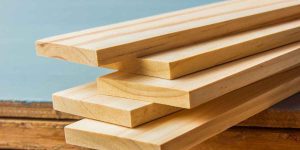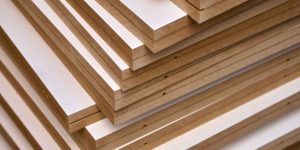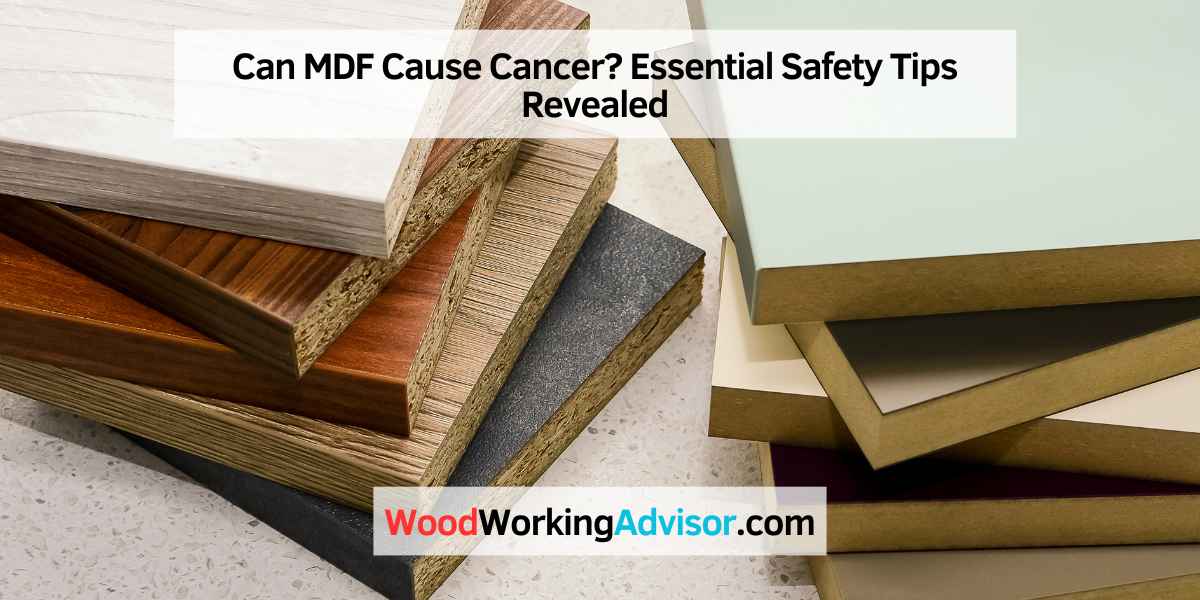Yes, MDF (medium-density fiberboard) does not cause cancer. MDF is made from wood fibers and resin, and there is no scientific evidence to suggest that it can cause cancer.
MDF is a popular building material used in furniture, cabinetry, and flooring. It is made by compressing wood fibers with resin to create a strong, durable product. Despite some concerns about the formaldehyde used in the resin, studies have shown that the levels of formaldehyde emitted from MDF are generally low and considered safe for indoor use.
When properly sealed and maintained, MDF poses no significant health risks. However, it’s important to follow proper safety precautions when cutting or sanding MDF to minimize exposure to dust and wear a mask to prevent inhalation.
Introduction To MDF And Health Concerns
MDF, or medium-density fiberboard, is a popular building material made from wood fibers, resin, and wax. It is commonly used in furniture, cabinetry, and shelving due to its affordability and versatility. However, concerns have been raised about the potential health risks associated with MDF, including the question of whether MDF can cause cancer. In this article, we’ll explore the health concerns surrounding MDF and its potential link to cancer.
What Is MDF?
MDF, or medium-density fiberboard, is an engineered wood product made by breaking down hardwood or softwood residuals into wood fibers. These fibers are combined with wax and a resin binder, and then formed into panels using high temperature and pressure. The result is a versatile and cost-effective building material that is commonly used in various applications, including furniture, flooring, and interior trim.
Why The Concern About Cancer?
One of the primary reasons for concern about the potential link between MDF and cancer is the presence of formaldehyde. Formaldehyde is a common component of the resins used to bind the wood fibers in MDF. Prolonged exposure to formaldehyde has been associated with an increased risk of certain types of cancer, including nasopharyngeal cancer and leukemia. Given that MDF can emit formaldehyde gas over time, there is understandable concern about the potential health risks for those exposed to MDF products.
The Science Behind MDF And Cancer Risks
MDF, or medium-density fiberboard, is a commonly used material in furniture and construction. While there is no direct evidence linking MDF to cancer, it does release formaldehyde, a known carcinogen, which can pose health risks if proper precautions are not taken during manufacturing and installation processes.
It is important to understand the science behind MDF and the potential cancer risks associated with it.
Medium-density fiberboard (MDF) is a popular choice for furniture and cabinetry because of its affordability and durability. However, concerns have been raised about the potential health risks associated with MDF, particularly the risk of cancer. In this article, we will explore the science behind MDF and cancer risks, specifically focusing on the chemicals in MDF, such as formaldehyde, and the research conducted on cancer and formaldehyde exposure.
Chemicals In MDF: Formaldehyde
Formaldehyde is a colorless gas that is commonly used in the manufacturing of MDF. It is a highly reactive chemical that is known to cause irritation to the eyes, nose, and throat when inhaled. Formaldehyde is also a known carcinogen, meaning it has the potential to cause cancer in humans.
Research On Cancer And Formaldehyde Exposure
Research has been conducted on the potential link between formaldehyde exposure and cancer. The International Agency for Research on Cancer (IARC) has classified formaldehyde as a Group 1 carcinogen, which means it is a substance that is known to cause cancer in humans. This classification was based on studies that showed an increased risk of nasopharyngeal cancer and leukemia in workers who were exposed to high levels of formaldehyde in their workplace.
While the risk of cancer from formaldehyde exposure in MDF is generally considered low, it is still important to take precautions when working with or around MDF. This can include wearing protective clothing and equipment, ensuring proper ventilation, and choosing low-emission MDF products when possible.
In conclusion, the chemicals in MDF, particularly formaldehyde, have been linked to an increased risk of cancer. While the risk is generally considered low, it is still important to take precautions when working with or around MDF. By being aware of the potential risks and taking appropriate measures, we can help reduce the risk of cancer associated with MDF exposure.
Regulations And Standards For MDF Safety
The regulations and standards for MDF safety have been put in place to ensure that the material does not cause cancer. Formaldehyde emissions from MDF can be harmful if not properly regulated, so it is important to follow safety guidelines to protect both workers and consumers.
Governmental Regulations On Formaldehyde
Government regulations ensure safe formaldehyde levels in MDF products.
- Formaldehyde emissions are restricted by agencies like the EPA.
- Health agencies monitor MDF production for compliance.
Industry Standards For MDF Manufacturing
Manufacturers adhere to strict industry standards for MDF safety.
- Quality control measures are in place throughout production.
- Regular testing ensures compliance with safety standards.
Comparing MDF To Other Materials
MDF is generally safe, but some types may contain formaldehyde which is a potential carcinogen. Regularly check for CARB compliance to reduce health risks. Always prioritize safety when choosing materials.
MDF Vs. Solid Wood
MDF is an engineered wood product, while solid wood is natural wood cut directly from trees.

MDF Vs. Plywood: Health Implications
MDF contains adhesives and resins that may release formaldehyde, whereas plywood is made by layering wood sheets without added chemicals.
Safety Tips For Handling And Working With MDF
Medium-density fiberboard (MDF) is a popular construction material used in many industries. However, MDF is a potential health hazard due to the presence of urea-formaldehyde resins and wood fibers that can cause respiratory problems and even cancer. Therefore, it is crucial to know how to handle and work with MDF safely. In this article, we will discuss some essential safety tips to keep you and your workers safe from MDF hazards.
Proper Ventilation And Dust Control
Proper ventilation is crucial when handling MDF. The dust produced during MDF cutting, sanding, or sawing can cause respiratory problems and other health issues. Therefore, it is essential to have proper ventilation systems in place to reduce the risk of inhalation. Make sure to work in an area with good air circulation, and always wear a respirator mask to avoid inhaling MDF dust. Additionally, use dust collection systems, such as vacuum cleaners or dust extractors, to prevent the accumulation of dust in the workspace.
Personal Protective Equipment (PPE)
Personal Protective Equipment (PPE) is essential when working with MDF. PPE includes gloves, goggles, respirators, and protective clothing. Wear gloves to protect your hands from sharp edges and splinters. Goggles will protect your eyes from flying debris and dust. A respirator will protect your respiratory system from harmful particles. Always wear protective clothing, such as long sleeves and pants, to avoid direct contact with MDF.
Working with MDF can be dangerous if proper safety measures are not taken. Following the safety tips mentioned above, including proper ventilation, dust control, and personal protective equipment, can reduce the risk of health hazards associated with MDF. Remember to prioritize safety when working with MDF to ensure the wellbeing of yourself and your workers.
Practical Measures To Minimize Risk
When it comes to the potential health risks associated with MDF (Medium Density Fiberboard), it’s important to take practical measures to minimize any potential harm. By following a few simple steps, you can reduce your exposure to formaldehyde and minimize the risk of adverse health effects. Here are some practical measures you can take:
Choosing Low-formaldehyde MDF Products
One of the most effective ways to minimize the risk of formaldehyde exposure is to choose MDF products that have low formaldehyde emissions. When selecting MDF materials for your projects, look for products that adhere to strict emission standards, such as those labeled with the CARB (California Air Resources Board) compliant certification. These products are manufactured using low-formaldehyde resins and are safer for both you and the environment.
Safe Cutting Techniques To Reduce Dust
When working with MDF, it’s important to take precautions to minimize the amount of dust generated. Dust from MDF can contain formaldehyde and other potentially harmful particles, which can pose a risk if inhaled. To reduce dust and protect yourself, consider the following safe cutting techniques:
- Wear a properly fitted dust mask or respirator to filter out airborne particles.
- Use a dust collection system or vacuum attachment to capture dust at the source.
- Ensure proper ventilation in your workspace to help dissipate any airborne particles.
- Use sharp tools and blades to minimize the amount of dust generated during cutting.
- Consider wet cutting methods or using a water spray to further reduce dust.
By implementing these safe cutting techniques, you can significantly reduce your exposure to dust and minimize the potential health risks associated with MDF.
Summary
Minimizing the risk of formaldehyde exposure when working with MDF is crucial for your health and well-being. By choosing low-formaldehyde MDF products and employing safe cutting techniques to reduce dust, you can protect yourself and create a safer working environment. Remember, taking these practical measures is essential to minimize any potential health risks associated with MDF.
Long-term Health Monitoring And Precautions
When it comes to long-term health monitoring and precautions for regular Medium Density Fiberboard (MDF) users, it’s important to stay informed about potential health risks and take proactive measures to mitigate them. Although MDF itself is not known to directly cause cancer, the formaldehyde-based resins used in its production have been linked to health concerns, including cancer, when exposed to high levels over extended periods. Here’s how you can monitor your health and take precautions.
Health Monitoring For Regular MDF Users
- Monitor respiratory health regularly for symptoms such as coughing, wheezing, or shortness of breath.
- Keep an eye out for skin irritation or allergic reactions that may develop due to prolonged contact with MDF.
- Track any changes in overall well-being and be mindful of potential symptoms linked to formaldehyde exposure.
- Consider scheduling regular check-ups with a healthcare professional to assess any potential health impacts.
When To Seek Medical Advice
- If you experience persistent respiratory issues or skin problems, seek medical advice promptly.
- Any noticeable decline in health or the development of concerning symptoms warrants a consultation with a healthcare provider.
- Regular MDF users should consider discussing their exposure and potential health risks with a medical professional.
Conclusion: Balancing Use And Safety
Key Takeaways On MDF And Cancer Risk
MDF contains formaldehyde, a known human carcinogen, which can pose cancer risk through long-term exposure.
- Limit exposure: Minimize time spent in areas with MDF and ensure adequate ventilation.
- Consider alternatives: Explore using low-emission or formaldehyde-free MDF products.
- Monitor air quality: Regularly test indoor air quality for formaldehyde levels.
Future Directions In MDF Safety Research
Scientists are exploring innovative methods to reduce formaldehyde emissions from MDF, such as utilizing advanced coatings and resin formulations.
- Enhanced regulations: Encourage stricter industry standards to limit formaldehyde content in MDF.
- Long-term studies: Conduct comprehensive research on the health effects of prolonged MDF exposure.
- Consumer awareness: Educate individuals about potential risks and safe handling of MDF products.

Frequently Asked Questions
Q1: Is MDF A Potential Cause Of Cancer?
MDF, or medium-density fiberboard, is not known to directly cause cancer. However, it contains formaldehyde, a chemical that can emit low levels of formaldehyde gas. Prolonged exposure to high levels of formaldehyde may increase the risk of certain cancers.
Q2: How Does Formaldehyde In MDF Relate To Cancer Risk?
Formaldehyde emissions from MDF can contribute to indoor air pollution. Inhaling high levels of formaldehyde over extended periods may increase the risk of nasopharyngeal and respiratory tract cancers. It’s important to ensure proper ventilation and limit exposure to minimize any potential health risks.
Q3: Are There Any Precautions To Take When Using MDF?
To reduce exposure to formaldehyde, it is advisable to use MDF products that meet low-emission standards, such as CARB Phase 2 compliant materials. Adequate ventilation and avoiding direct contact with unfinished MDF can also minimize potential risks. Proper handling, including wearing a mask and gloves, is recommended when cutting or sanding MDF.
Q4: Can Sealing Or Painting MDF Reduce Health Risks?
Sealing or painting MDF can help reduce formaldehyde emissions by creating a barrier between the material and the surrounding air. Using low-VOC (volatile organic compounds) paints or sealants can further minimize potential health risks. It’s important to follow proper safety precautions and use appropriate materials when applying finishes to MDF.
Conclusion
MDF’s potential link to cancer warrants further research for better understanding and safety measures. Stay informed and cautious about potential risks associated with MDF products. Prioritize your health by seeking alternatives or using MDF in well-ventilated areas to minimize exposure.
Stay proactive in safeguarding your well-being.


